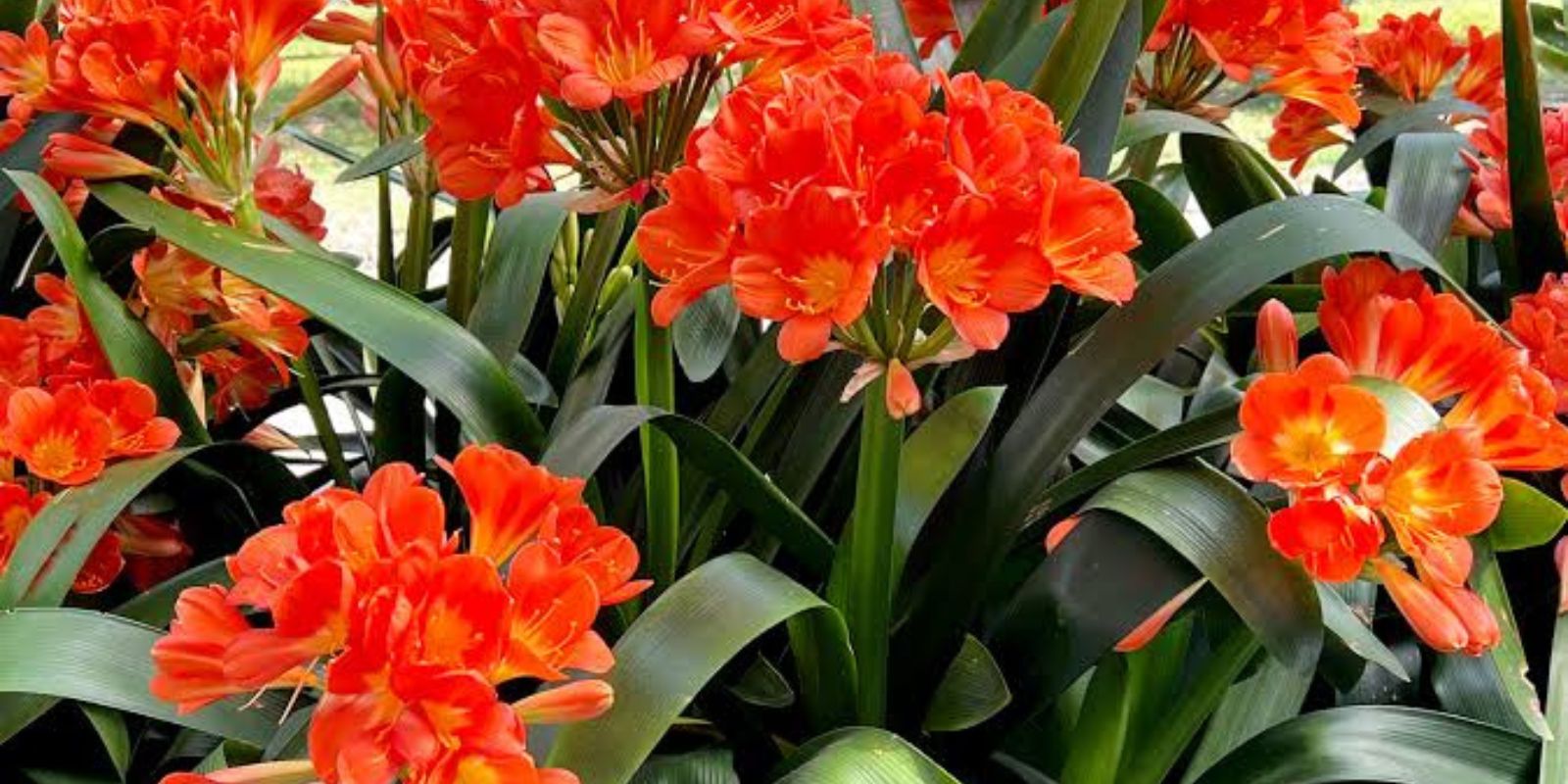Clivia, known for its vibrant blooms and lush green foliage, is a favorite among indoor plant enthusiasts. Native to southern Africa, this plant combines elegance with resilience, making it perfect for both novice and seasoned gardeners. This guide will walk you through everything you need to know about cultivating Clivia, ensuring it thrives and brings beauty to your home for years to come.
Why Choose Clivia?
Clivia stands out for its striking orange or yellow flowers, which bloom in clusters atop long, strap-shaped leaves. It’s a versatile plant that thrives in a range of conditions, provided you adhere to its basic care needs. Unlike many flowering plants, Clivia can flourish indoors with minimal sunlight and requires little maintenance, making it ideal for busy plant lovers.
Step-by-Step Care Guide
1. Ideal Growth Conditions
Clivia prefers semi-shaded locations, making it perfect for indoor settings near windows with indirect sunlight. Here’s how to create the ideal environment:
- Indoors: Place Clivia in bright, filtered light. Avoid direct sunlight, as it can scorch the leaves.
- Outdoors: During summer, Clivia can thrive in the garden under partial shade. However, as temperatures drop in autumn, bring it indoors to protect it from frost.
2. Watering and Winter Rest
Watering is key to Clivia’s health, but it’s equally important to let it rest during the winter months:
- Regular Watering: During its active growing period (spring and summer), water regularly but ensure the soil drains well to prevent waterlogging. Allow the topsoil to dry slightly between waterings.
- Winter Dormancy: From October to January, reduce watering significantly. Clivia enters a resting phase during this time, and overwatering can lead to root rot. Keep it in a cool spot with temperatures between 10-15°C.
3. Fertilization for Vibrant Blooms
Proper fertilization encourages Clivia to produce its vibrant flowers.
- Spring Start: Begin fertilizing in spring when the plant comes out of dormancy. Use a balanced fertilizer formulated for flowering plants.
- During Blooming: As buds appear, increase watering and fertilize weekly until August. This will sustain healthy blooms and promote leaf growth.
4. Attention During Flowering
Clivia blooms are a reward for proper care, and ensuring their longevity requires some attention:
- Maintain a consistent watering schedule, especially during flowering, as irregular watering can cause leaves to wilt.
- Avoid disturbing or moving the plant during this period. Clivia is sensitive to changes in position, which can disrupt its flower development.
5. Repotting and Propagation
Clivia doesn’t require frequent repotting, but when it outgrows its container, it’s time to transplant:
- Timing: Only repot Clivia after it finishes flowering, as repotting during the growing season can stress the plant.
- Method: Use a well-draining soil mix, such as one made with peat, compost, and sand. Clivia prefers to be slightly root-bound, so choose a pot only slightly larger than the current one.
- Propagation: Divide offsets (baby plants) from the parent plant when repotting. Plant these offsets in individual pots and care for them as you would a mature Clivia.
6. Pest and Disease Management
Clivia is generally pest-resistant, but you should still watch for:
- Scale Insects and Mealybugs: Remove these pests by wiping the leaves with a damp cloth or using insecticidal soap.
- Root Rot: This occurs due to overwatering. Ensure your pot has proper drainage, and let the soil dry between waterings.
Why Clivia Needs Winter Rest
One unique feature of Clivia is its winter dormancy requirement. Providing a cool, dry resting period from October to January mimics its natural habitat and encourages robust blooming. Without this period, the plant may not flower or produce weaker blooms.
Aesthetic and Health Benefits of Clivia
Apart from its ornamental appeal, Clivia offers several benefits:
- Air Purification: Like many houseplants, Clivia helps improve indoor air quality by absorbing toxins and releasing oxygen.
- Mood Booster: The vibrant flowers and lush greenery create a calming environment, reducing stress and enhancing well-being.
Common Mistakes to Avoid
To ensure your Clivia thrives, avoid these common pitfalls:
- Overwatering: This is the most common cause of plant decline. Always let the soil dry slightly before watering.
- Direct Sunlight: Too much sunlight can scorch the leaves, while too little light can hinder flowering.
- Frequent Movement: Clivia dislikes being moved frequently, especially during flowering. Keep it in a consistent spot.
Clivia Throughout the Year
Here’s a quick seasonal care summary to keep your Clivia thriving year-round:
- Spring: Resume regular watering and fertilizing as the plant wakes up from dormancy.
- Summer: Keep the plant in partial shade, water consistently, and enjoy its vibrant growth.
- Autumn: Prepare the plant for dormancy by reducing watering and bringing it indoors.
- Winter: Allow the plant to rest in a cool spot, watering sparingly.
Final Thoughts
Clivia is a resilient and rewarding houseplant that thrives with minimal effort. Its ability to bloom year after year makes it a favorite among plant enthusiasts. By following these simple care tips, you can enjoy its vibrant flowers and lush greenery for many years to come.
What’s your experience with growing Clivia? Share your tips and success stories in the comments!
#CliviaCare #Houseplants #IndoorGardening #PlantLovers #FloweringPlants #GardeningTips #HomeGardening

